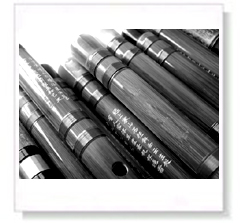|
Dizi
The Chinese
Bamboo Flute
 >>
The dizi (Chinese bamboo flute) goes
back more than 2,000 years in Chinese history and is the
oldest Chinese wind instrument. It first gained its great
popularity during the Han Dynasty. Because of its rich and
varied sound it has always been one of the favorite
instruments of the Chinese people. After the Song and Yuan
dynasties and the development of Chinese opera, it became the
most important accompanying instrument for many local operas.
In the last few hundred years the flute has been used more on
a solo basis, and at the same time it has become part of
larger ensemble arrangements as well, particularly in the last
century. Recently, the dizi has even been combined with
Western instruments such as the cello, viola, and piano, with
pleasant results. >>
The dizi (Chinese bamboo flute) goes
back more than 2,000 years in Chinese history and is the
oldest Chinese wind instrument. It first gained its great
popularity during the Han Dynasty. Because of its rich and
varied sound it has always been one of the favorite
instruments of the Chinese people. After the Song and Yuan
dynasties and the development of Chinese opera, it became the
most important accompanying instrument for many local operas.
In the last few hundred years the flute has been used more on
a solo basis, and at the same time it has become part of
larger ensemble arrangements as well, particularly in the last
century. Recently, the dizi has even been combined with
Western instruments such as the cello, viola, and piano, with
pleasant results.
Below the Yangtze River the flute is
played in the Southern style, and is known as the qu di or da
di. The qu refers to Kunqu, an operatic form that makes strong
use of the flute. Da refers to its size — it is larger than
its Northern neighbor. Above the Yangtze the flute is played
in the Northern style, and is at times called the xiao di. In
this case xiao also refers to the size of the flute, which is
relatively small. In both case, because they are made of
bamboo, the flutes are simply referred to as "bamboo
flutes." The Southern style of flute playing is softer
and subtler than the lively, boisterous style of the North.
While in the past the two styles were rarely combined, modern
composers are now drawing on both traditions and creating
exciting new arrangements for pioneering artists like Mr. Chen
Tao, who is a virtuoso performer of both styles.
The Chinese flute differs from other
flutes around the world not just because of its bamboo
material but also in its use of a pliant reed membrane, which
is placed over a certain hole in the flutes. The sound of the
instrument will vary depending on how the reed is made and how
it is attached.
Short
Version
>> Dizi,
a transverse bamboo flute with
six finger holes, one blowhole and an extra membrane hole. The
combination of the bamboo tube and vibrating reed membrane are
responsible for the instruments bright, piercing tones. It is
a most important wind instrument used in all genres of Chinese
folk music and songs.
|

